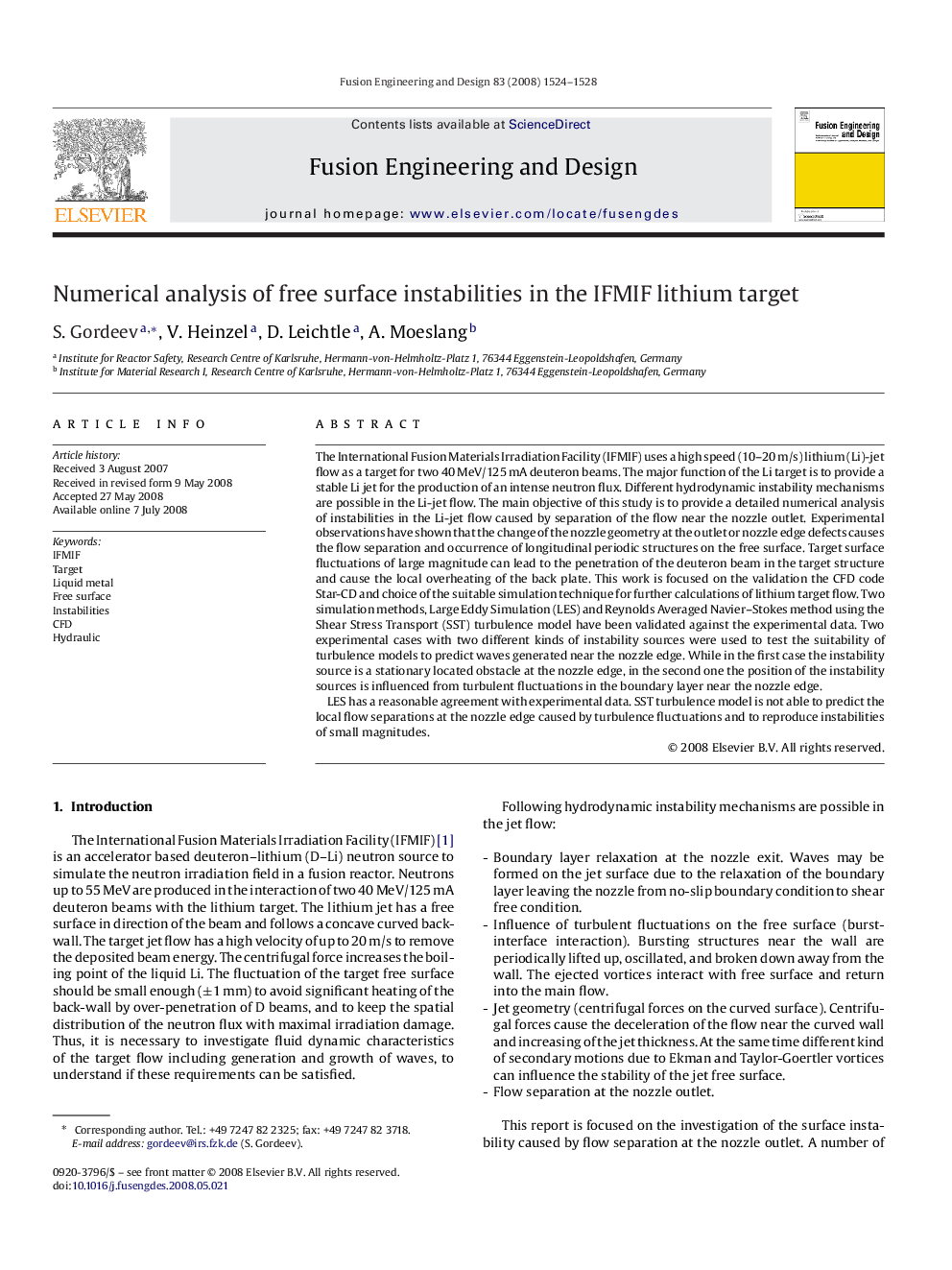| کد مقاله | کد نشریه | سال انتشار | مقاله انگلیسی | نسخه تمام متن |
|---|---|---|---|---|
| 272752 | 505030 | 2008 | 5 صفحه PDF | دانلود رایگان |

The International Fusion Materials Irradiation Facility (IFMIF) uses a high speed (10–20 m/s) lithium (Li)-jet flow as a target for two 40 MeV/125 mA deuteron beams. The major function of the Li target is to provide a stable Li jet for the production of an intense neutron flux. Different hydrodynamic instability mechanisms are possible in the Li-jet flow. The main objective of this study is to provide a detailed numerical analysis of instabilities in the Li-jet flow caused by separation of the flow near the nozzle outlet. Experimental observations have shown that the change of the nozzle geometry at the outlet or nozzle edge defects causes the flow separation and occurrence of longitudinal periodic structures on the free surface. Target surface fluctuations of large magnitude can lead to the penetration of the deuteron beam in the target structure and cause the local overheating of the back plate. This work is focused on the validation the CFD code Star-CD and choice of the suitable simulation technique for further calculations of lithium target flow. Two simulation methods, Large Eddy Simulation (LES) and Reynolds Averaged Navier–Stokes method using the Shear Stress Transport (SST) turbulence model have been validated against the experimental data. Two experimental cases with two different kinds of instability sources were used to test the suitability of turbulence models to predict waves generated near the nozzle edge. While in the first case the instability source is a stationary located obstacle at the nozzle edge, in the second one the position of the instability sources is influenced from turbulent fluctuations in the boundary layer near the nozzle edge.LES has a reasonable agreement with experimental data. SST turbulence model is not able to predict the local flow separations at the nozzle edge caused by turbulence fluctuations and to reproduce instabilities of small magnitudes.
Journal: Fusion Engineering and Design - Volume 83, Issues 10–12, December 2008, Pages 1524–1528